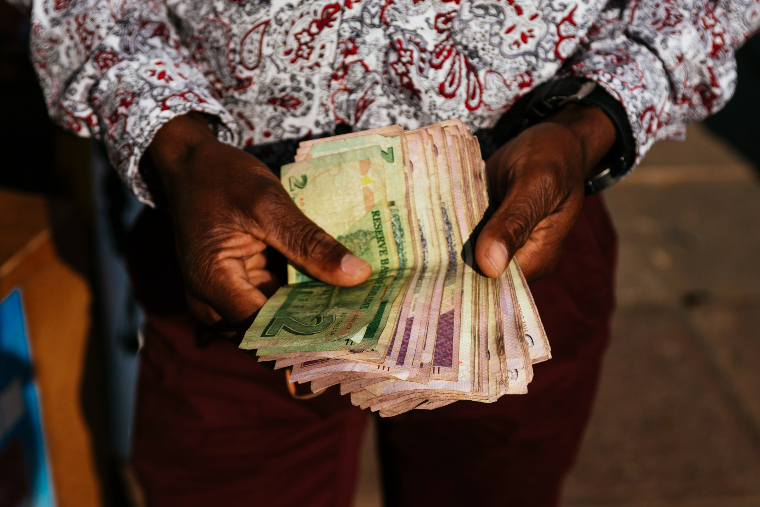 The Zimbabwe dollar which has depreciated by more than 600% since the beginning of the year is apparently not the worst performing currency in the world this year. Find out which is.
The Zimbabwe dollar which has depreciated by more than 600% since the beginning of the year is apparently not the worst performing currency in the world this year. Find out which is.
- Zambian Kwacha
Price Against 1 USD on January 2, 2023: 18
Price Against 1 USD on September 15, 2023: 20
Percentage Decline in Price in 2023: 11%
The Kwacha is the currency of Zambia, a country in Africa that borders Zimbabwe. The country used the British pound as the legal tender till 1964 before shifting to Kwacha. The Kwacha has taken a hit against the US dollar in recent months as private sector spending contracts, inflation hits record highs, and the central bank of the country raises interest rates to around 10% to combat rising prices. The Zambian currency is subject to uncertainty due to debt restructuring and dwindling copper production.
Top firms like Mastercard Incorporated (NYSE:MA), PayPal Holdings, Inc. (NASDAQ:PYPL), and JPMorgan Chase & Co. (NYSE:JPM) have all warned investors of the unstable economic situation in Zambia.
- South African Rand
Price Against 1 USD on January 2, 2023: 17
Price Against 1 USD on September 15, 2023: 19
Percentage Decline in Price in 2023: 11%
South African Rand is the official currency of South Africa. One of the reasons for the bad performance of the Rand this year has been the interest rate hikes in the US that have had a net negative impact on emerging economies. Another important factor has been Chinese influence in the country. China is the biggest trading partner of South Africa and reports of a slowdown in the Chinese economy have hit the currency throughout the year, although fresh stimulus measures from Beijing have provided some monetary relief in recent weeks.
- Rwandan Franc
Price Against 1 USD on January 2, 2023: 1070
Price Against 1 USD on September 15, 2023: 1207
Percentage Decline in Price in 2023: 12.8%
Rwandan Franc is the official currency of Rwanda, a country in Africa that borders Uganda. Stubborn inflation has forced the central bank in the country to raise key interest rates this year, resulting in a downward spiral with regards to the currency. Despite the rate increases, inflation numbers in the country continue to make headlines. In August 2023, the annual inflation rate in Rwanda increased to 17.4%, up from 17.3% in July.
- Lao Kip
Price Against 1 USD on January 2, 2023: 17279
Price Against 1 USD on September 15, 2023: 19949
Percentage Decline in Price in 2023: 15%
Lao Kip is the legal tender in Laos, a Southeast Asian country bordered by Myanmar and China. Kip has been the official currency in the country since 1955. A spike in commodity prices and a tightening of global financial conditions have resulted in Kip losing value against the US dollar this year. The proximity to China and the impact of a slowing Chinese economy have also made it harder for the Kip to gain in value. External liquidity pressures, a widening circular debt, and large external debt repayments all continue to haunt the currency.
- Sierra Leonean Leone
Price Against 1 USD on January 2, 2023: 18854
Price Against 1 USD on September 15, 2023: 22457
Percentage Decline in Price in 2023: 19%
Sierra Leonean Leone is the official currency of Sierra Leone, a country in West Africa that borders Guinea. High energy and food prices, partly due to the Russian invasion of Ukraine, have forced the poor African country to turn to the International Monetary Fund (IMF) for loan programs. Foreign exchange reserves of the country are also dwindling, forcing further pressure on the local currency. This situation is expected to continue in the coming months and the country remains at risk of debt distress.
Continued next page
(242 VIEWS)

